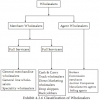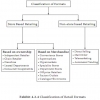MARKETING MANAGEMENT - Retailers And Wholesalers
Theories In Retail - Retailers And Wholesalers
Posted On :
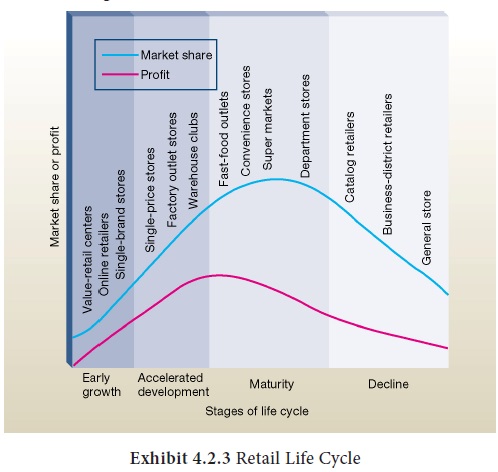
Like every other industry new retail firms have brought innovative approaches in retailing.
Theories In Retail
Like every other industry new retail firms have brought innovative approaches in retailing. Retail development can be looked at from different theoretical perspective, as no one theory is universally acceptable. The reason for this unacceptability is mainly because of different market conditions, different socio-economic conditions in the market. This session deals with the following theories namely
• Wheel of Retailing
• Retail Accordian Theory
• Theory of Natural Selection
• Retail life cycle
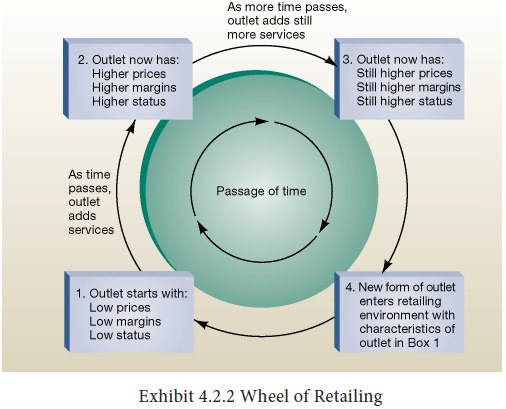
This theory talks about the structural changes in retailing. The theory was proposed by Malcomb McNair and according to this theory it describes how retail institutions change during their life cycle. In the first stage when new retail institutions start business they enter as low status, low price and low margin operations. As the retail firms achieve success they look in for increasing their customer base.
They begin to upgrade their stores, add merchandise and new services are introduced. Prices are increased and margins are raised to support the higher costs. New retailers enter the market place to fill the vacuum, while this continues to move ahead as a result of the success. A new format emerges when the store reaches the final stage of the life cycle. When the retail store started it started low but when markets grew their margins and price changed. The theory has been criticized because they do not advocate all the changes that happen in the retail sector and in the present scenario not all firms start low to enter the market
This theory describes how general stores move to specialized stores and then again become more of a general store. Hollander borrowed the analogy ‘accordian’ from the orchestra. He suggested that players either have open accordion representing the general stores or closed accordions representing narrow range of products focusing on specialized products. This theory was also known as the general-specific-general theory. The wheel of retailing and the accordion theory are known as the cyclical theories of retail revolution
According to this theory retail stores evolve to meet change in the microenvironment. The retailers that successfully adapt to the technological, economic, demographic and political and legal changes are the ones who are more likely to grow and prosper. This theory is considered as a better one to wheel of retailing because it talks about the macro environmental variables as well, but the drawback of this theory is that if fails to address the issues of customer taste, expectations and desires
Like products, brands retail organizations pass through identifiable stages of innovation, accelerated development, maturity and decline. This is commonly known as the retail life cycle. Any organization when in the innovation stage is nascent and has few competitors. They try to create a distinctive advantage to the final customers. Since the concepts are new at this stage organizations try to grow rapidly and the management tries to experiment. Profits will be moderate and the stage may last for a couple of years. When we talk about our country e-buying or online shopping is in the innovation stage.
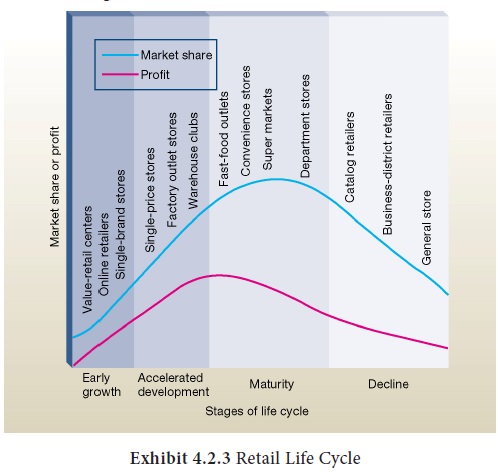
In the accelerated growth phase the organizations face rapid increase in sales, competitors begin to emerge and the organizations begin to use leadership and their presence as a tool in stabilizing their position. The investment level will be high as there are others who will be creating a lot of competition. This level may go up to eight years. Hypermarkets, Dollar stores are in this stage. In the maturity stage as competition intensifies newer forms of retailing begin to emerge, the growth rate starts to decline. At this stage firms should start work on strategies and reposition techniques to be in the market place. Supermarkets, cooperative stores are in this stage. In the final stage of the retail life cycle is the declining
Like every other industry new retail firms have brought innovative approaches in retailing. Retail development can be looked at from different theoretical perspective, as no one theory is universally acceptable. The reason for this unacceptability is mainly because of different market conditions, different socio-economic conditions in the market. This session deals with the following theories namely
• Wheel of Retailing
• Retail Accordian Theory
• Theory of Natural Selection
• Retail life cycle
Wheel of Retailing

This theory talks about the structural changes in retailing. The theory was proposed by Malcomb McNair and according to this theory it describes how retail institutions change during their life cycle. In the first stage when new retail institutions start business they enter as low status, low price and low margin operations. As the retail firms achieve success they look in for increasing their customer base.
They begin to upgrade their stores, add merchandise and new services are introduced. Prices are increased and margins are raised to support the higher costs. New retailers enter the market place to fill the vacuum, while this continues to move ahead as a result of the success. A new format emerges when the store reaches the final stage of the life cycle. When the retail store started it started low but when markets grew their margins and price changed. The theory has been criticized because they do not advocate all the changes that happen in the retail sector and in the present scenario not all firms start low to enter the market
Retail Accordian Theory
This theory describes how general stores move to specialized stores and then again become more of a general store. Hollander borrowed the analogy ‘accordian’ from the orchestra. He suggested that players either have open accordion representing the general stores or closed accordions representing narrow range of products focusing on specialized products. This theory was also known as the general-specific-general theory. The wheel of retailing and the accordion theory are known as the cyclical theories of retail revolution
Theory of Natural selection
According to this theory retail stores evolve to meet change in the microenvironment. The retailers that successfully adapt to the technological, economic, demographic and political and legal changes are the ones who are more likely to grow and prosper. This theory is considered as a better one to wheel of retailing because it talks about the macro environmental variables as well, but the drawback of this theory is that if fails to address the issues of customer taste, expectations and desires
Retail Life cycle
Like products, brands retail organizations pass through identifiable stages of innovation, accelerated development, maturity and decline. This is commonly known as the retail life cycle. Any organization when in the innovation stage is nascent and has few competitors. They try to create a distinctive advantage to the final customers. Since the concepts are new at this stage organizations try to grow rapidly and the management tries to experiment. Profits will be moderate and the stage may last for a couple of years. When we talk about our country e-buying or online shopping is in the innovation stage.

In the accelerated growth phase the organizations face rapid increase in sales, competitors begin to emerge and the organizations begin to use leadership and their presence as a tool in stabilizing their position. The investment level will be high as there are others who will be creating a lot of competition. This level may go up to eight years. Hypermarkets, Dollar stores are in this stage. In the maturity stage as competition intensifies newer forms of retailing begin to emerge, the growth rate starts to decline. At this stage firms should start work on strategies and reposition techniques to be in the market place. Supermarkets, cooperative stores are in this stage. In the final stage of the retail life cycle is the declining
Tags : MARKETING MANAGEMENT - Retailers And Wholesalers
Last 30 days 2319 views












